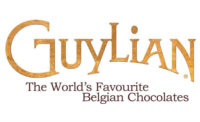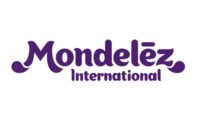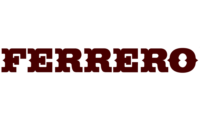
By Bernie Pacyniak
A leader in organic and certified chocolates, the
Agostoni family commits to the future by investing in a state-of-the-art
€50-million facility in Orsenigo,
Italy.
Call
him a “numbers” man. Adello Crippa doesn’t shy away from the label. Rather, he
embraces it. In fact, there’s not much the general manager and chief financial
officer of ICAM shies away from.
And
that’s probably the reason that the Agostoni family brought Crippa in to
oversee their growing organic chocolate operations in 1999. Recognizing that
the family’s expertise in sourcing and producing premium chocolates wasn’t a
guarantee for success during the coming century of extreme competition and
ongoing industry consolidation, co-founder Carolina (Vanini) Agostoni, along
with her brothers Urbano and CianCarlo Vanini as well as her children, Angelo,
Plinio, Marisa and Antonio, looked beyond the family to direct the business.
Upon joining ICAM, Crippa, together with the
Agostonis, have overseen dramatic changes within the company. At the end of the
year 2000, the company posted €40 million in sales. Of that, €5 million (12.5%)
represented exports, the remaining €35 million domestic sales.
Today, thanks to strong double-digit sales
growth abroad, primarily in the organic sector, export sales account for more
than half (60%) of the company’s projected 2010 sales of €100 million euros
($135 million).
In 2009, the company processed nearly 11,000
metric tons of cocoa beans and produced 11,700 metric tons of chocolate.
Organic represented 45% and 53%, respectively of those totals.
And although ICAM - like most companies during
the Great Recession - suffered a dip in
sales in 2009, all forecasts point to a robust 2010 and an even better 2011.
One of the reasons for that projection stems from a decision made five years
ago by the Agostonis.
As Crippa recalls, he didn’t mince words in
presenting the options available to the family stakeholders. In reviewing the
numbers and the realities facing the company, Crippa asked the Agostonis what
they wanted to do with the company, “Do you want to grow it or do you simply
want ‘La dolce morte?’” In other words, “a sweet death.”
As he explained, it would have been very easy
for everyone to simply let things continue as they were, guaranteeing a
comfortable existence for all family members. Growth, however, required an
aggressive plan, one that would put into place people, systems and
infrastructures to meet the challenges from multinational corporations and more
demanding consumers and customers.
Having nurtured a fledgling family business
since 1946, one that’s evolved into the largest supplier of organic cocoa and
chocolate products in the world, the Agostoni family’s passion for chocolate
makes it their life’s work.
It’s likely Crippa suspected that the family
stakeholders would pass on the “sweet death” option, preferring instead to
develop a long-term strategic plan, one designed to address a multitude of
issues facing a midsized family operation.
In creating such a plan, the Agostonis zeroed
in on four critical concerns: operations, succession, systems and market
growth.

The new facility in Orsenigo features the largest cocoa bean
processing complex, which includes a three-story roasting, mixing and grinding
complex.
Two years ago, the company began designing the
plant, breaking ground in 2009. In April 2010, the company began producing dark
chocolate at the Orsenigo facility, a €50 million ($67 million) investment that
touts the largest cocoa bean processing system under one roof.
Several innovations, such as a segregated
cocoa bean warehouse that pumps beans to a sterilization unit prior to processing,
a trigeneration energy system, a highly sophisticated computerized monitoring
system, have established Orsenigo as a technological marvel.
And while Orsenigo represents an operational
component of the strategy, the other three elements - while less tangible - comprise key tactical
efforts to meet the family’s goal of becoming a €200-million ($270 million)
company within five years.

The first two of eight Buhler conches will
supply finished chocolate to four moulding lines for a variety of products.
Tagging a self-imposed 10-year deadline on
completing the transition, the Agostonis have already established two
third-generation family members in critical management positions: Sara Agostoni
(Angelo’s daughter) heads up all purchasing, excluding cocoa beans while
Giovanni Agostoni (Plinio’s son) oversees commercial operations in Italy.
But as Angelo emphasizes, both of them started
their professional careers elsewhere before joining ICAM. In this manner, best
practices from other industries and companies can be integrated into ICAM.
At the same time, once a member of the third
generation decides to join the family business, it’s a learning process focused
on understanding the underlying philosophy that drives the company.
“We want to ensure that the third generation
shares the same ideas, the same kind of thinking about the business that we
do,” Angelo says. “Simultaneously, we understand that the marketplace demands
new skills, that in our company we will need to fill new roles.”
That understanding leads directly to the third
point on the Agostinos’ action list, one which involves the incorporation of
new management systems, systems that represent best practices and world-class
protocols. Here already, the company has invested millions of dollars into SAP
and other programs designed to maintain the highest traceability, quality and
safety standards possible.

Antonio Agostino checks on the production of chocolate chips
on the newest moulding line installed in the facility, which features a Winkler
& Dunnebier 1.5-meter depositor and
Sollich cooling tunnels.
All four of these strategies, of course,
revolve around one guiding principal behind the Agostonis’ raison d’etre: equal partnering with cocoa bean farmers to achieve
the highest level of farm-to-bar quality
processing.
Long before Fair Trade certification became a
popular buzz word for ethical marketing, Angelo was establishing direct
contacts with farmers in Central and South America.
Frustrated in his efforts to introduce direct buying of cocoa beans with West
African farmers in the 1970s, Angelo shifted his focus to Central and South America.
There, he initiated technical and financial
support programs, programs that introduced tree care and propagation
techniques, proper fermentation and drying processes and even in-origin lab
testing in Panama, Honduras and Guatemala during the 1980s.
In 1990, ICAM became the first commercial
partner for the National Confederation of Dominican Cacao Producers (CONACADA),
which led to the conversion of some farms to organic certified cocoa beans in
1995.
As Angelo points out, when CONACADA was first
formed in 1985, farmers in the Dominican
Republic were not even fermenting their
cocoa beans. Their slow conversion led to improved quality and flavors.

Previous to 2004, a non-governmental organization opened a project to
farmers in the area rehab cocoa plantations, but there was no long-term NGO plan
for continuing development. Picking up where the NGO left off, Angelo and
Paredes formed the VRAE Farming Group. Shortly thereafter, ICAM established a
joint effort with the VRAE Farming Group to construct new fermenting and drying
centers.
The joint partnership quickly delivered a payback: In 2006, Angelo
received nearly 80 metric tons of cocoa; a year later VRAE delivered 900 metric
tons.
“We can make a difference for a farmer who owns between two to three
hectares and yields only a ton per year,” Angelo explains. “Today, there are
areas where we see 30 to 40 tons per year from one hectare.”
But it’s not just about yield. Quality, as in the case of aroma and
organoleptic characteristics, stem from a variety of factors, beginning with
soil, bean variety, tree cultivation and crop management to fermentation,
drying and proper storage and distribution. Truly, the food of the gods is in
the detail.
It’s an education process that Angelo continues to this day, one that
extends to in-origin raw bean testing, tests which are replicated again at the
company’s lab in Orsenigo.

Constant checks on quality are conducted
throughout the bean-to-bar process. First, beans are again evaluated prior to
being cleared for processing.
“We saw that more and more chocolate manufacturers were looking for
distinctive products, products that deliver more quality and have complete
traceability,” Angelo says.
“To us, it was clear we needed to have more control of the supply chain,
from farm to bar,” he continues. “In addition, these manufacturers are also
looking to develop new products within a short time frame. Today, the market is
very demanding; everyone’s looking for niche products. And that’s something
we’re good at. Be it a special recipe or one featuring a special inclusion, we
can develop those in a short time.”
To maintain that competitive capability, however, it was clear that a
new facility was absolutely necessary. ICAM’s growth had taxed the company’s
Via Pescatori factory built in 1953 to capacity.
Planning for the plant of the future began with a search for real estate
and the subsequent purchase of several
hectares in Orsengio, about 50 kilometers from Lecco. In short order planning for a
bean-to-bar complex, one which envisioned a 50,000-sq- meter (538, 195 sq. ft.)
plant, a separate bean warehouse and a totally automated final products
warehouse, began.

The company's frigeneration system of producing electrical energy--hot/cold water and steam--will save 30% on electrical costs.
“We’re currently producing 12,000 tons of cocoa beans and 15,000-16,000 tons of chocolate in Lecco,” Angelo says. “And
while it’s still a ‘work in progress,’ the Orsenigo facility is projected to
turn out 24,000 tons of cocoa beans and
30,000 to 25,000 tons of chocolate this year.”
But Orsenigo is more than just output. It’s
about exacting control of the process.
Antonio Agostino, head of quality and technology at the company, extols
the facility’s tremendous flexibility and traceability, which, not
surprisingly, begins at the cocoa bean stage.
For example, once beans arrive in Genoa, Italy,
via container (360 bags fill one container and create one lot), they are then
trucked to Orsenigo for inspection and storage. As Antonio explains, organic
beans are immediately segregated into separate holding stacks apart from
conventional beans to eliminate any chance of cross-contamination.
There, beans are removed from every bag and
then taken to the testing lab in the facility. Bar codes are assigned to each
bag to aid in the tracking of beans. A 9-kilogram mixed sample of beans from
that particular lot goes to the lab for a review of 12 specific qualities and a
100-count bean cut test.
Once approved, the beans are then cleared for
cleaning. After cleaning, the beans are gently transported pneumatically via
pipes from the warehouse, which is
separate from the main facility, and directed to a sterilization unit that’s
part of the plant. Here they undergo steaming, infra red treatment and then
steam again, to ensure bacteria removal in the first stage of cocoa bean
processing.
A sophisticated winnowing process separates
the shells from nibs greatly minimizing waste, producing the first of many cost
savings for the company. Beans are roasted on a batch basis before heading
toward a three-stage milling process and cocoa liquor production.
Once again, quality assurance steps in,
completing a two-stage testing process.
Beans that were originally sent to the lab for
initial testing are roasted, ground and processed into cocoa liquor, which is
evaluated using a 17-point flavor profile. At the factory, once liquor is
produced, a second sample is drawn from the holding tank. Here, again, a
five-member sensory panel conducts the same 17-point flavor profile.
Upon approval, the liquor is then released and
directed toward further processing, be it chocolate and/or cocoa powder/ butter
production.
It’s important to note that within the plant,
there are “kilometers and kilometers” of piping, all of which allow for easy
cleaning as well as dedicated use, be it for organic and conventional
chocolates, milk, dark or white.
At the moment, the company has a new 1.5-meter
wide dark chocolate drop moulding line in operation, which features a Winkler
& Dunnebier depositor and a Sollich cooling line. Plans call for three
additional moulding lines, currently in operation in Lecco, to be moved to Orsenigo where they’ll
be upgraded with new depositors as well as have their cooling tunnels extended.
At present, the plant features a single Duyvis
cocoa butter press, but two more will be installed shortly. Two six-ton Buhler
conches complement the plant’s pre-refining and refining units, also from
Buhler. Micron size can vary from 10 mm to 28 mm, depending up requirements,
Antonio says.
One of the plant’s most impressive
technological achievements, however, is the completely automated cocoa bean
processing system installed by Barth, a division of Buhler.
It is, as ICAM’s technology and quality
director points out, the largest in the world that’s he’s aware of.
Nevertheless, none of this technology matters if the love and passion for
making good chocolate isn’t there, asserts Antonio.
“Anyone can buy state-of-the-art technology or
premium ingredients, but that doesn’t make great chocolate,” he says. “In cocoa
processing, you have to know how to master the nearly infinite number of
scientific variables to guarantee an artisanal result.”
Moreover, as many experienced chocolatiers
know, replicating a recipe in a different location isn’t as straightforward as
most people would think, despite having all the ingredients and equipment the
same.
“But here, with this equipment, we have the
possibility of understanding all the nuances,” Antonio says. “Thus, it’s easier
to roast the beans and obtain the exact flavor and taste that you’re looking
for. When I dream at night about a particular chocolate whose beans come from a
special farm in Peru,
I know I can make it into the finest chocolate the next morning.”
That capability is what’s spurring ICAM’s push
toward key markets on the global landscape. For example, the company recently
secured the private label business for COOP UK and Scandanavia.
It’s also set up shop in the United States
with a new subsidiary dubbed Agostoni Chocolate NA. The company has teamed up
with Global Organics Ltd. to distribute semi-finished products to manufacturers
and chocolatiers and has a direct sales team based in Los Angeles to worked with private-label
accounts. That same team also manages
the specialty food distributor network, which caters to smaller operators, such
as chefs and chocolatiers. Down the road, the company will consider introducing
its own retail brand in the United
States.
Right
now, however, Crippa notes that there are less and less companies willing to
guarantee organic and certified products from farm to bar. That’s where ICAM,
because of its direct relationship with farmers, can excel.
As
he points out, “Our success is based on the human factor.” Excessive size
precludes such a relationship.
It’s
that human touch, from interacting with the farmer and his cocoa crop to
dreaming about the processing techniques to preserve that origin flavors and
charactesitics, which keeps ICAM’s artisan roots integrated in the present and
now the future as well.
ICAM
Headquarters: Lecco, Italy
Plants: Lecco 27,000 sq. meters (290,626 sq. ft.);
Orsenigo - 50,000
sq. meters (538,195 sq. ft.)
2010 Sales: €100 million
Employees: 350
Products: Semi-finished
chocolate products, couvertures, cocoa butter, cocoa powder, bars, pralines
Sales Breakout: Private label –
54%; professional – 28%; branded – 16%
Brands: ICAM, Agostoni
Chocolate
Management
Team: Angelo
Agostoni, chairman and president; Adelio Crippa, managing director and cfo;
Marco Beltrami, assistant managing director; Alessandro DeMarchi, director of
industrial clients and strategic purchases; Marisa Agostoni, marketing
director; Sergio Cerutti, director of domestic sales; Carla Baroni; director of
exports; Plinio Agostoni, director of production and logistics; Alberto
Agostoni, director of engineering & maintenance; Antonio Agostoni, director
of quality and technology.



